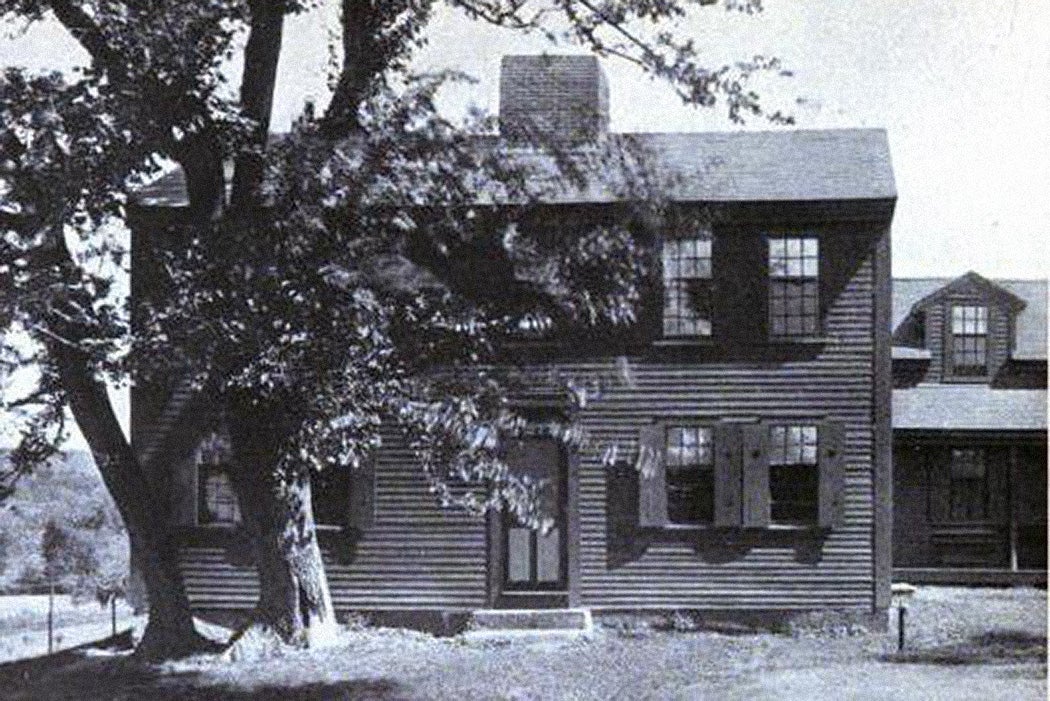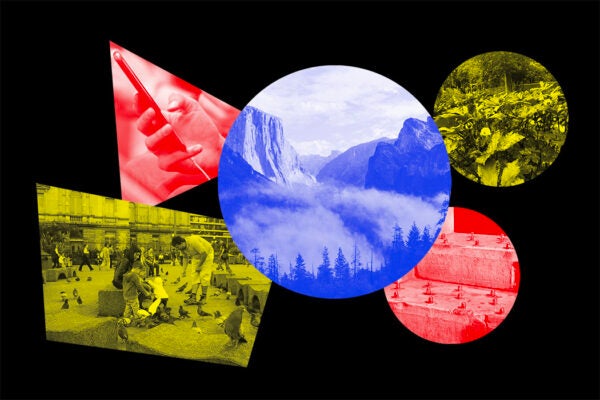There have been various utopian experiments over the last 200 years. From communes to cult compounds and new religions, different groups have tried to create alternative models of society. Bronson and Abigail Alcott (parents of Louisa May Alcott), for example, established such a community, called Fruitlands, in Massachusetts in the 1840s. Together with Bronson’s friend Charles Lane and their families, the Alcotts attempted to live out a vision of agrarian self-sufficiency.
As historian Kathryn R. Falvo explains, the Fruitlands experiment was also an early American example of both anarchism and veganism. To the extent that the Alcotts were anarchist (not a term they would have used), their vision seemed to include a world without property ownership. (Not coincidentally, Bronson Alcott had previously been jailed for resisting taxes.) They wanted to create a harmonious community without property or commerce.
In addition, they (especially the men) wanted to free themselves from a meat diet. One of the intellectual influences on their dietary choices was socialist theorist Charles Fourier, whose views found an audience among other countercultural New Englanders of the era. In this, the Alcotts and Lanes were part of a wave of dietary modernizers, linked to the Protestant revivals of the nineteenth century and a response to industrialization. As with Sylvester Graham and his eponymous cracker and the cereals of John Harvey Kellogg, these movements were about improved health but also temperance and moral uplift.
Vegetarianism had gained some currency in the early nineteenth century (more so in the United Kingdom than the United States) and had visible advocates among social reformers. But members of the Fruitlands commune took it further than many, transitioning to full-on veganism.
“The prescribed diet at Fruitlands thus represented a clean break from the animal world,” writes Falvo. “When reformers referred to a ‘flesh diet,’ they meant the gamut of materials produced by animals.”
The mandate was clear: “No animal substance, neither flesh, butter, cheese, eggs, nor milk, pollute our tables, or corrupt our bodies.” No one at Fruitlands was allowed to “wear animal-derived clothing, use animals for farm work…not even use manure as fertilizer.”
This step toward dietary extremism was more of a response to the commune’s spiritual aims than any concern about the slaughter or consumption of animals.
“We tend to think that vegans eschew meat and dairy out of a respect for animal life,” Falvo writes. “But at Fruitlands, the decision to do so was premised on an utter disregard—or more accurately, downright disgust—with both the literal and metaphorical ‘animal.’”
In order to promote the (potential) purity of humans, it was necessary to degrade the animal, “both in flesh and in concept,” Falvo explains.
Fruitlanders believed, as did many vegetarians at the time, that abstinence from animal flesh would purify the human soul. In their logic, communal adherence to this principle would create perfectly good human beings, separated from all negative influences and able to behave in the most charitable, giving manner.
But the Fruitlanders’ vision of society didn’t free them from their devotion to gender roles. According to Falvo, “Bronson and Charles Lane may have wanted to rid themselves of animal influences. But they certainly found no inconsistencies in treating Abigail like a workhorse.”
Like many intellectuals who have attempted such self-sufficiency, the Fruitlanders had failed to anticipate the amount of labor involved in agricultural work. And in this case, the men seemed happy to abandon the project to go on, for instance, speaking tours, leaving the women (or rather, primarily Abigail, who was at times the only other adult present) to do all the domestic and farm work.
Weekly Newsletter
Hierarchy and rules seem to have been another problem at Fruitlands. To make such a community work, more adults needed to be willing to join, but few prospective members stuck around once they experienced communal living. Bronson was a stern ruler, resulting in participants leaving or getting kicked out (in one case, for the transgression of eating a small piece of fish at someone’s house). The anarchist vision was not an egalitarian one.
In the end, it transpired that the vegan diet (or at least the diet they managed to scratch together from their poor farming and refusal to buy anything) was nutritionally deficient, leaving Fruitlanders weakened and ill.
As a result of these combined challenges, the commune collapsed, echoing the failure of other utopian experiments. But if nothing else, the Fruitlands history demonstrates the persistent will of idealists to try something new, and their belief that they can recreate the world anew.
Three Tips for Teaching:
Read about Fruitlands in Louisa May Alcott’s journal (published 1889), courtesy of Brigham Young University’s Italian Travel Literature Collection on JSTOR.
Visit Fruitlands. Take a New England field trip to the Fruitlands Museum in Harvard, Massachusetts.
Support JSTOR Daily! Join our membership program on Patreon today.







